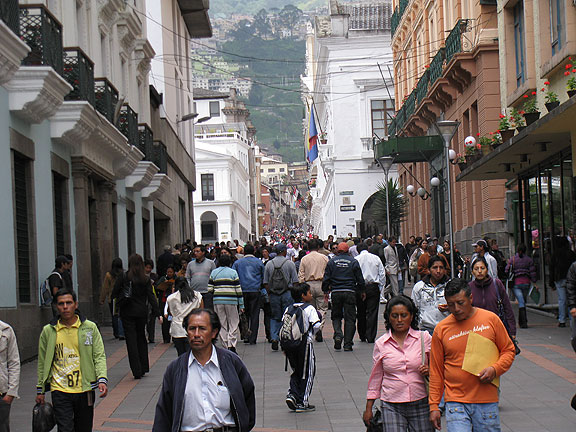
Quito, Ecuador, historic center: as I always discover when leaving the U.S., people and cities elsewhere are generally much more civilized. Look at this dense pedestrian zone in Quito's center!
We landed in Quito, Ecuador on Feb. 21 and made our way to the Magic Bean hostel without any trouble. As the driver let us out though, he seemed really nervous and warned us that we were in a difficult area. Hard to believe when we woke up the next morning and walked a block from our hotel (somewhat nervously) and found a thriving commercial district, with a fairly gentrified feeling to it, including plenty of upscale clothing stores and restaurants.
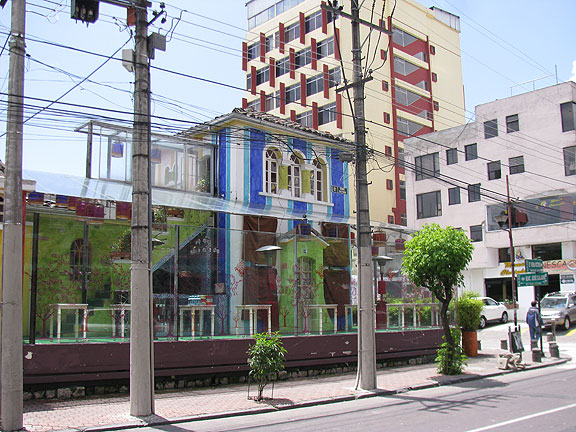
The Marsical district in the daytime is a fun melange of old refurbished buildings and new boring architecture.
In fact, we had a wonderful 6 days in Quito, mostly visiting new friends in the local bicycling scene. (There is a more complete report on that over at sf.streetsblog.) We rode bikes all over thanks to the loaners from Frank at Cicleadas del Rey and the wonderful guidance and company he gave us, along with the charming Mashol and equally engaging Pablo. Here’s a moment when Mashol was in conversation with Adriana while we were riding uphill on one of the many nice separated bikeways, or ciclovias, in Quito.
But the title of this post became our code to each other because wherever we went, and whomever we spoke with, all gave us urgent warnings about public safety. We both have traveled extensively so we tend to take such warnings pretty lightly, but it did affect us after a while, how consistently we were being told that it just wasn’t safe to walk places, to go up and down the scores of alluring staircases that ascend the towering slopes on either side of Quito, or to be anywhere at all after about 9 pm! In fact we learned that most of Ecuadorian city life shuts down very early, which we noticed as we’d be walking around. Suddenly the streets which had been bustling and lively were eerily empty. And then Mr Hyde would begin to appear. We figured some deal had been made (a la The Wire) in which the police agreed to leave the dealers and prostitutes alone if they keep away from some specified zones that were Quito’s night life, in particular a block from our hostel, the Plaza Mariscal Foch, which was heavily patrolled by police and even heavy-weapon carrying military on Saturday night!
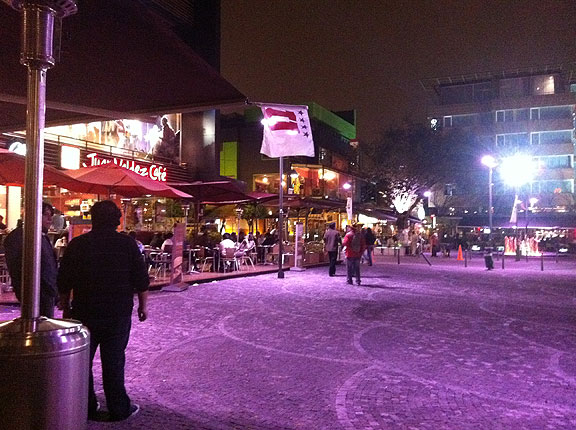
A dreary Wednesday night in Plaza Mariscal Foch, but during the following three nights the place got more and more densely crowded. In the streets just a block or two away, criminals seemed to hold uncontested sway.
We never really believed it was as dangerous as people kept telling us, but one night the security guard at the Hostel (a rather surly but brawny guy) suddenly locked the gate and warned everyone within sight that there was a guy waving a gun around on the corner. A spat had broken out between rival gangs, apparently. Anyway, we had no direct experience of crime or difficulty in our time in Quito, though a low level tension was hard to shake given the assumptions that everyone around us had about danger.
That said, we loved Quito! We went all over on bicycles, taking full advantage of the well-designed ciclovias, and spent a lot of time going through some of the beautiful parks of the city. The city, once a northern outpost of the Inca Empire, has a long colonial history and much beautiful architecture remains. The wide presence of expansive public parks is part of what gives Quito its prosperous and comfortable feeling.
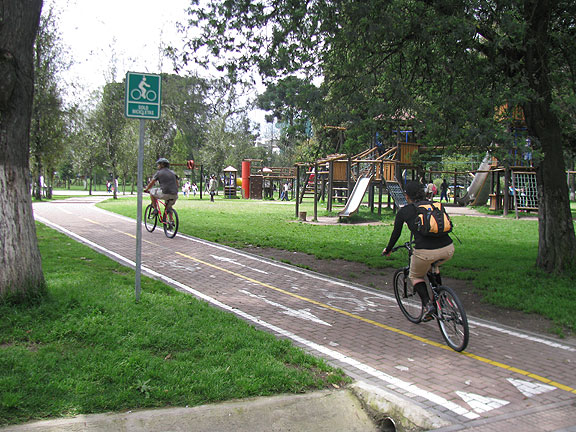
The "Ciclo-Q" ciclovia where it cuts through Parque El Ejido, though it is often filled with pedestrians.
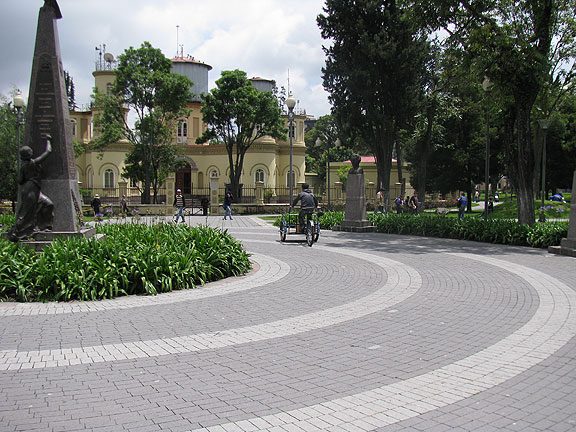
A ubiquitous freight tricycle rolls through a central park that also holds the oldest observatory in Latin America (not including Chichen Itza!)
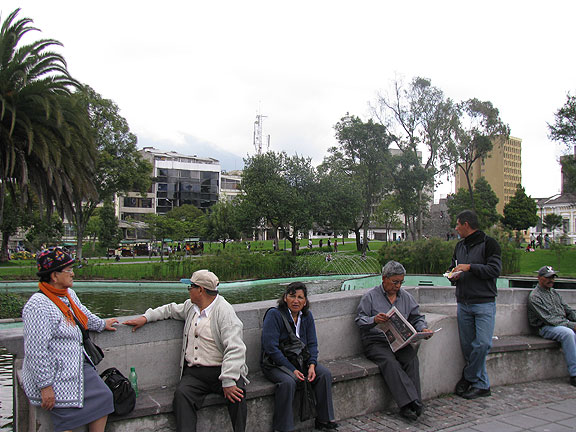
On the other side of the observatory, some regulars hang out near an artificial lagoon and its bridge.
While we were wandering around on our 2nd day in town, we walked through the Parque El Ejido enjoying the cacophony of daily life under way. A crowd in the distance piqued our curiosity so we approached to discover the whole group enthralled by the tale-spinning, joke-cracking charm of a guy we later learned was named Gerardo. He didn’t take too long to notice us lingering outside the circle and pulled us in quickly, asking me for a dollar to riff on money, respect, and various slang terms for dough, which led quickly to slang terms for sexual organs, and a bunch of other off-color jokes. After using the money talk to start collecting from his audience, he soon borrowed a scarf from one guy and quickly wrapping it around his head he transformed himself into Christopher Columbus. Now, for his soliloquy on colonialism and empire, he needed a queen, and who better than Adriana?!? So she was pulled onto his “stage” and became Queen Isabella la Catolica!
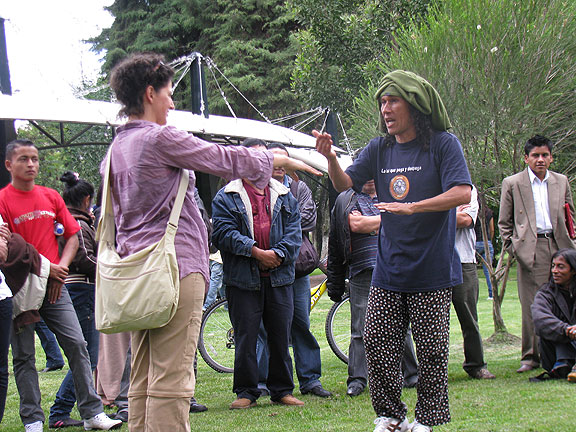
Not sure what was proposed exactly, but something to do with a New World, lots of gold, that sort of thing...
So we had a great time, finding ourselves fully integrated into the moment, a few dozen spectators enjoying the show as much as we did… soon we took a moment for our typical self-portrait:
Where is Quito, exactly, you might ask? Glad you did… here are some maps and then a series of shots from the top of a hill called Panecillo, which by some anthropological reckoning is a manmade hill, equal to some of the great pyramids if true.
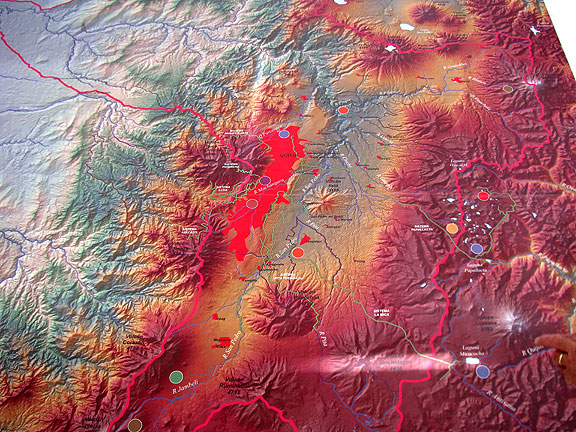
This huge topo map is on the floor of the amazing Museo Del Agua (Water Museum) and shows Quito in dark red, surrounded by mountains and a number of volcanoes.
On the top of Panecillo is a giant, aluminum, quite kitschy Virgin statue that you can see from many places in Quito. You’ll see it in the distance in many of the photos still to come, but for now, note that this promontory has an incredible view on a clear day, and by miracle the Saturday morning we were determined to hire a taxi to drive us around the hilltops was crystal clear! So here are some views of the Panecillo, the Virgin, us at the view point, and then the incredible views we had around Quito. Interestingly, the city has built a huge gondola called the Teleferico, which goes up to 4200 meters, so this location is less visited than it once was.
We were blown away by the beauty of Quito. It sits in a high valley in the Andes, with soaring mountains all around, and incredibly abundant water resources too. Which led us to be quite curious to check out the Museo del Agua, the Water Museum. It’s super modern, perched on a slope not too far from the Panecillo. To get there we first had to stop at the Cemeterio San Diego, which is itself an architectural marvel. The cemetery has long ago been enclosed by urban real estate and thus has cleverly decided to build apartments within its grounds. Here are some of the photos we took, showing the some of Quito’s squatted neighborhoods climbing the hills behind.
So our pleasant taxi ride continued from the cemetery to the Museum of Water…
The Museo del Agua was a major cornerstone of the forward-looking municipal sensibility we felt in Quito. Not only are there ciclovias and beautiful parks all over (and they’re about to start converting their old airport into a new park when the new airport opens in the coming year), but there are major initiatives to provide public space, training for children and women in urban cycling, and this beautiful ecological museum that is built on the original waterworks for 19th century Quito. Some of those features are still present, and a lovely short video shows some very old retirees discussing their lives, dedicated to providing clean drinking water to the city. The Museum directs a lot of its exhibits towards children, supposing it seems that the kids are the ones that can change thinking and habits more easily than the adults.
After this we had our driver take us across the city to the opposite hilltop, where a big park called Itchimbia sits, featuring an old 19th century “crystal palace”-style market building has been rebuilt as a cultural center at the top. We perused some fantastic bw photos of the 1970s by Cristobal Corral Vega.
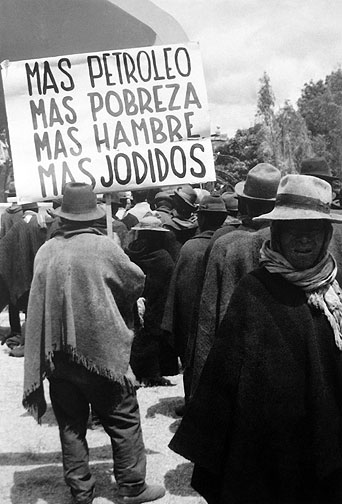
More oil, more poverty, more hunger, more screwed... photo by Cristobal Corral Vega, 1970s, Ecuador.
There were many more images, many less politically charged, but these really caught my eye. In fact, the political history of Ecuador since the 1960s is super interesting to me, since clearly it’s at least in part thanks to the enormous efforts of the broad population of workers and others that the country is doing as well as it is now. There were something like 5 or 6 general strikes since the 1970s, a left-wing military coup, oil production leading Ecuador to join OPEC, boom-and-bust oil economy, the devastation left by Texaco (now Chevron, and now the loser of $8 billion lawsuit in Ecuadorian courts), and on and on… much more yet to learn… In fact, we have been picking up the trail of a fascinating social/cultural institution here, hanging on after centuries, called the Minga in Ecuador (the Minka in Peru), which is a version of a community barn-raising… more to come on that later…
Finally we ended our day with a walk down to a gorgeous restaurant overlooking the city, and then finally a big staircase walk down to the center… here’s a few last photos and then to sleep for four hours before we head off for our 4-day trek on the Inca Trail… I’ll have much more to write about after that, from our stops in Ambato, Guaranda, Salinas de Guaranda, Cuenca, Cuzco Peru, the Inca trail… it’s been an incredibly exciting and rewarding journey!
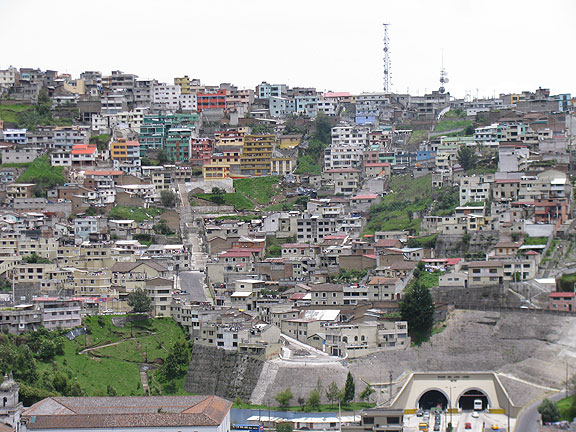
This is a view of some other stairs and a major tunnel from the Museo del Agua... the stairs around Quito kept drawing our attention... would love to go back and write a walking tour book!
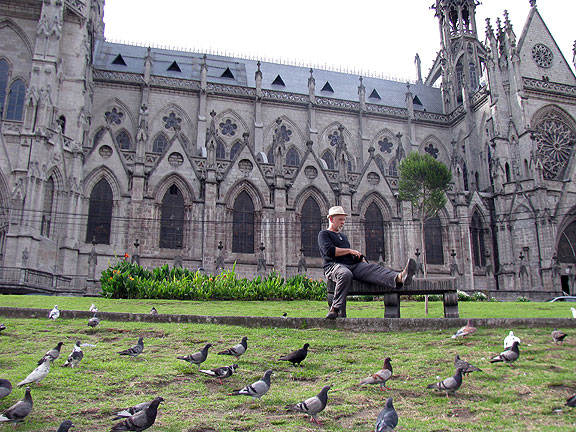
These f#**in' pigeons followed me all the way from San Francisco, I'm sure of it! Here I am kicking at them outside the Cathedral...
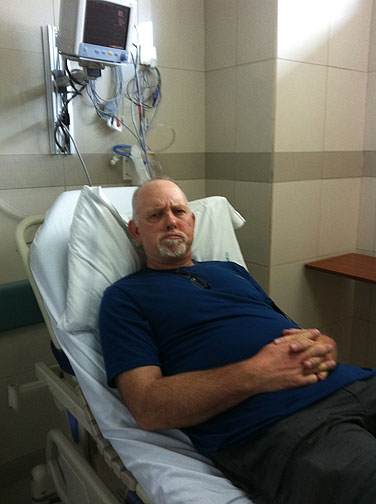
On our last night in Quito I had a scare: I thought I had gallstones or kidney stones or something awful. 24 hours of burning pain in my side... but after a very reasonable $87 visit to the local emergency room and a sonogram and full blood test, I turned out fine... just gas! I renewed my charter membership in the Fart Liberation Front!
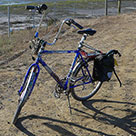
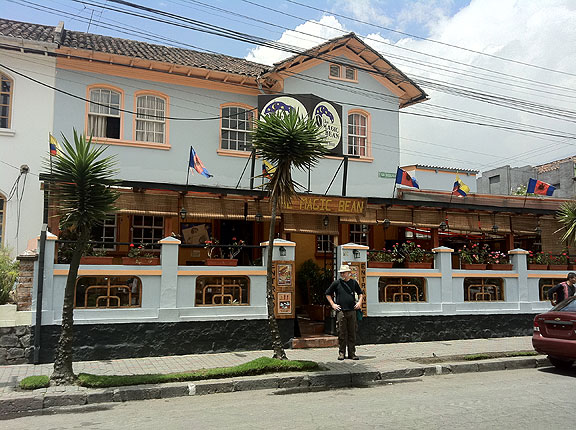
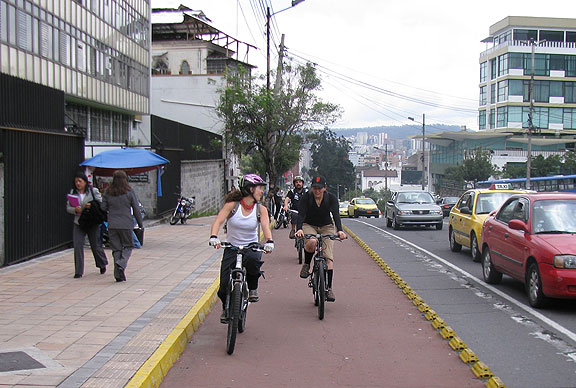
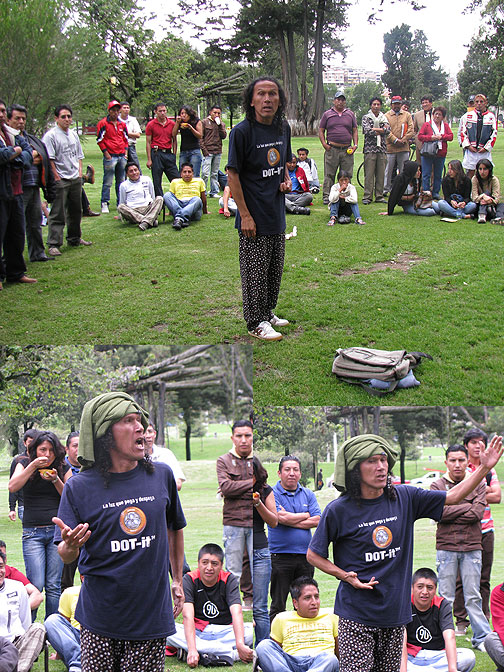
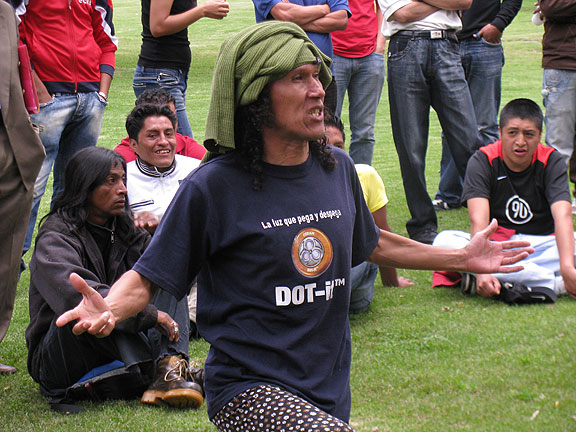
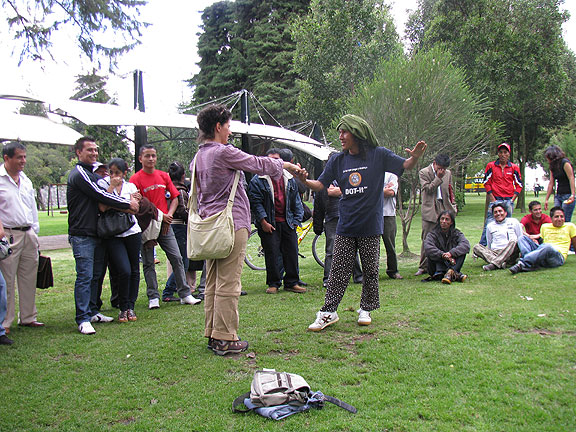
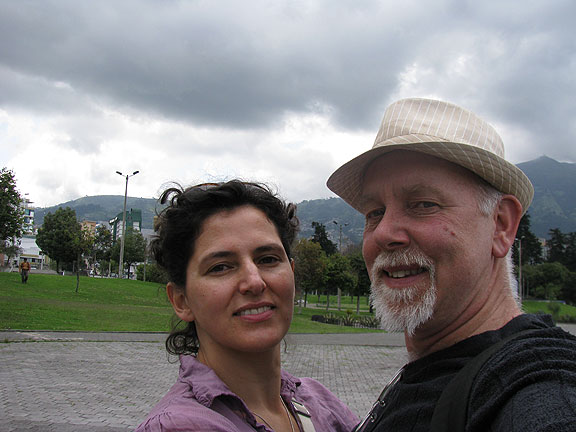
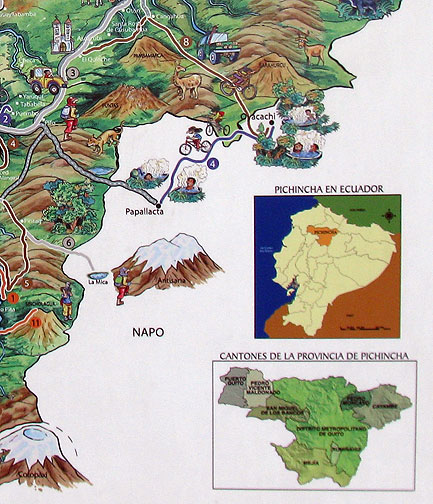
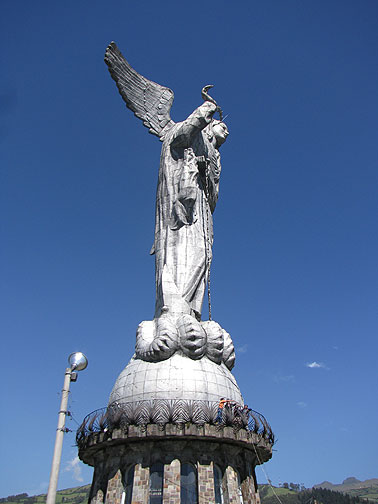
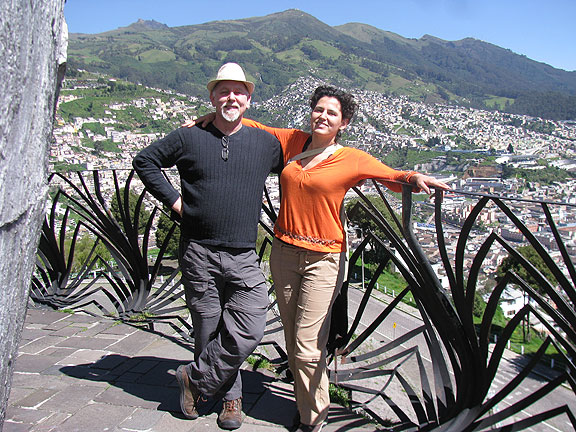
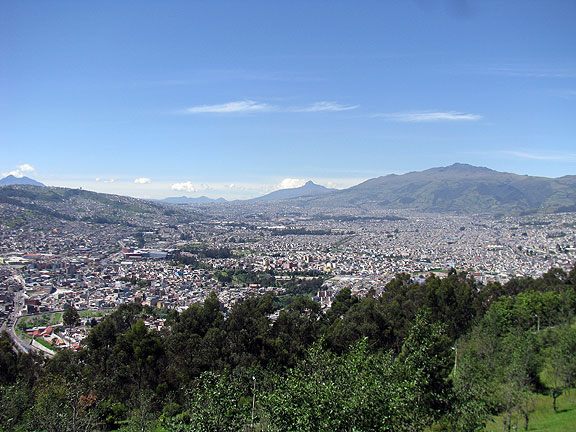
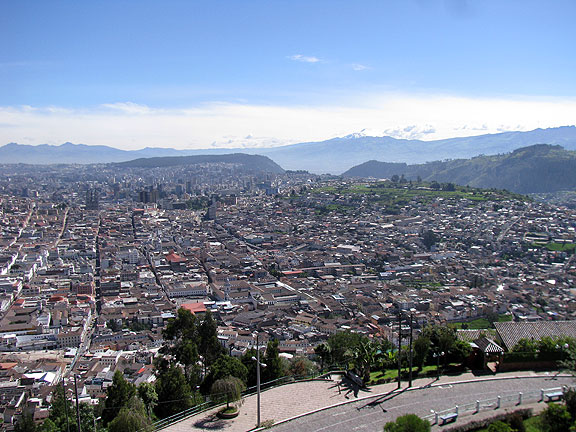
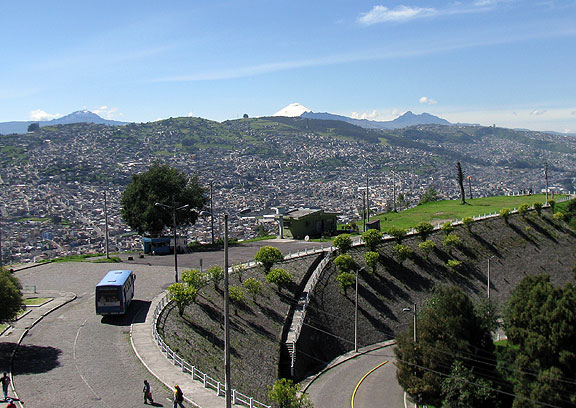
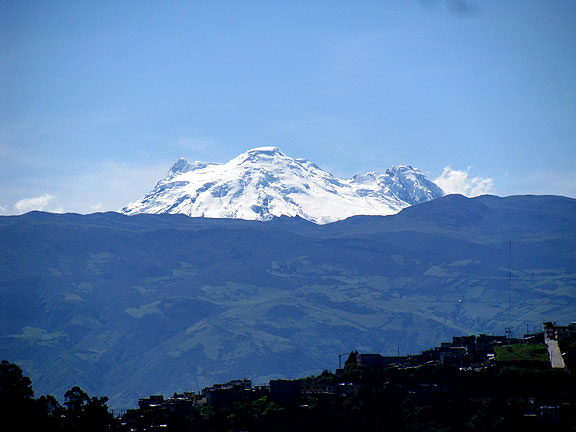
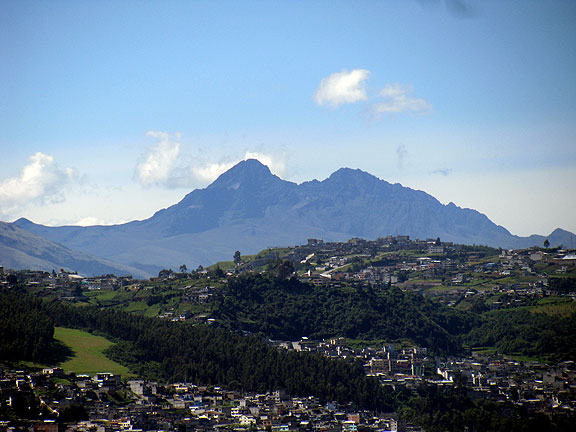
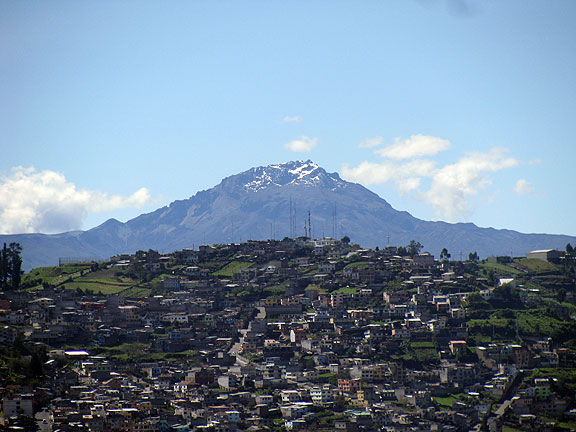
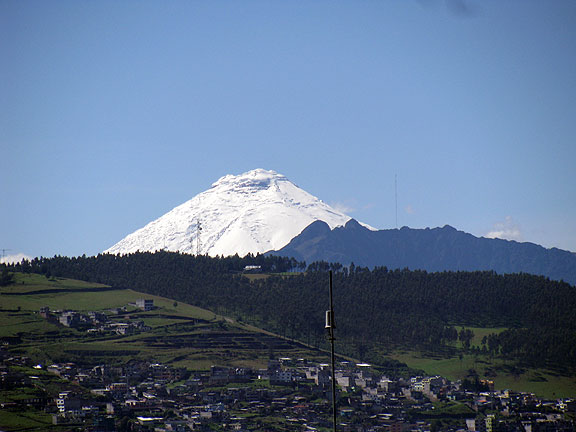
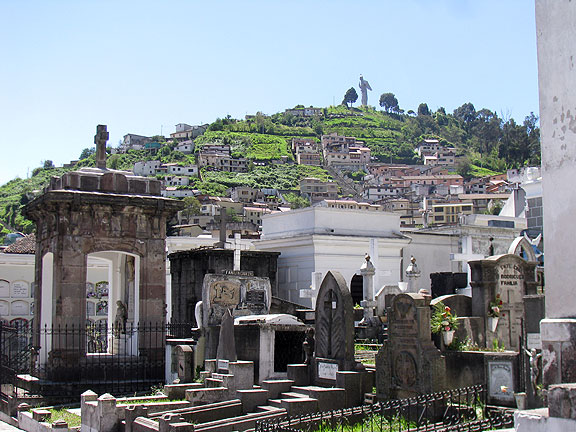
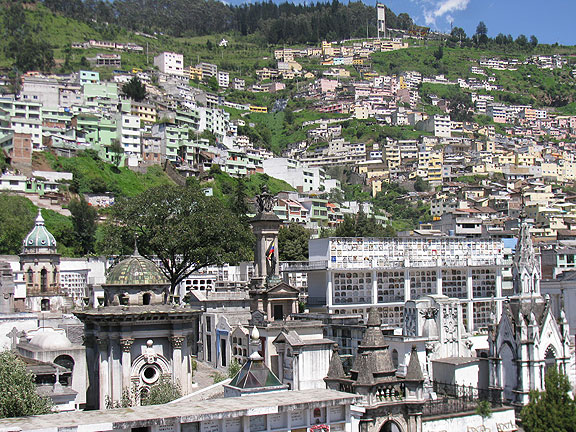
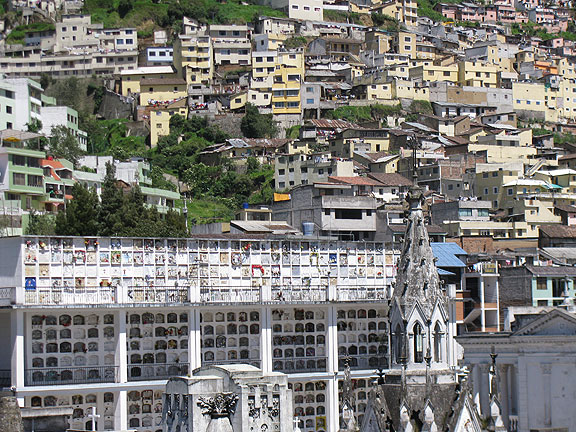
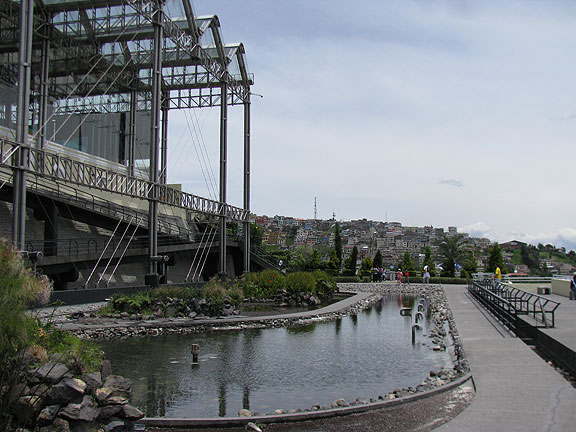
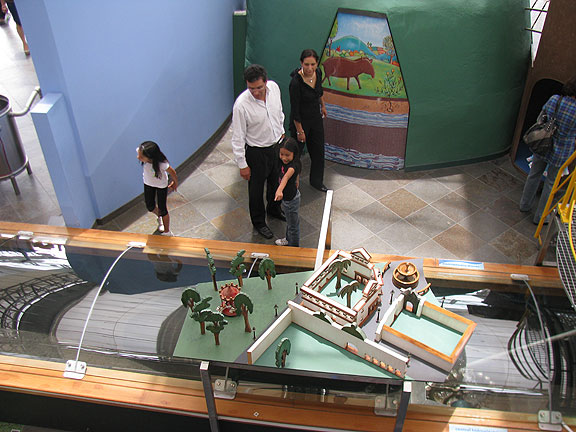
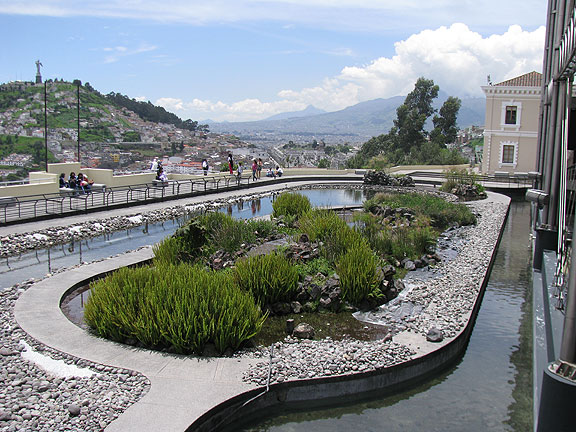
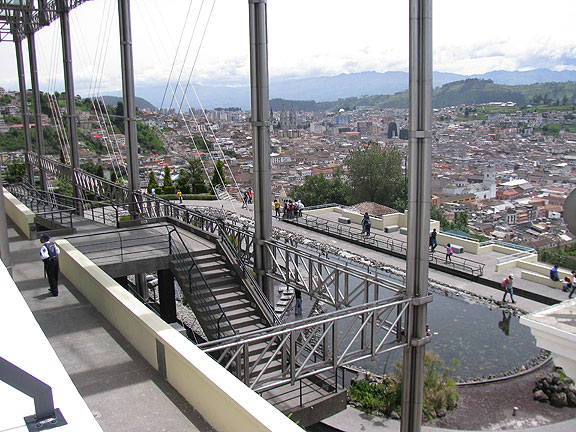
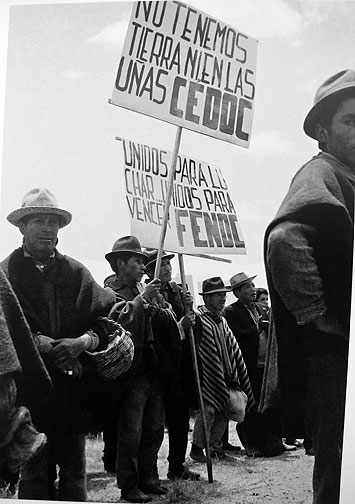
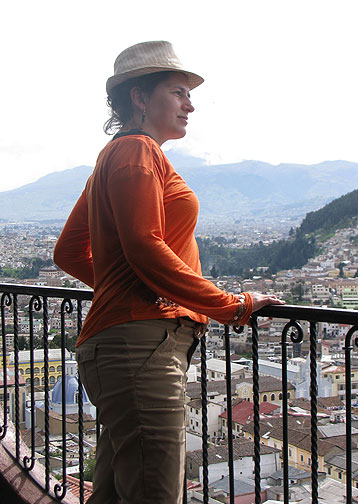
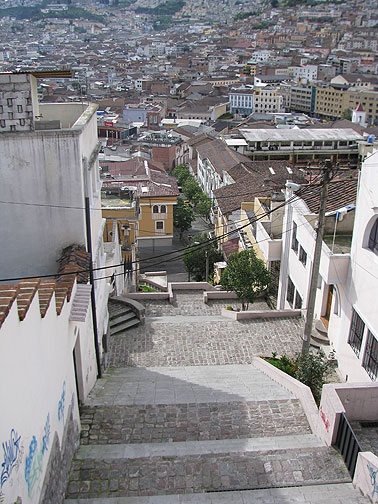
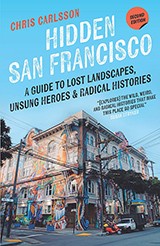
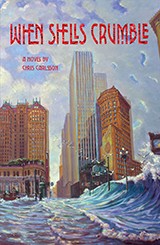
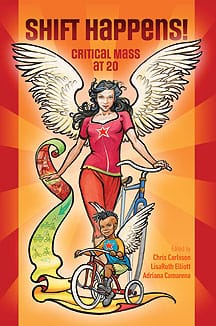
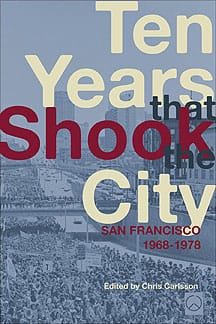
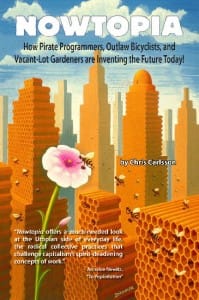
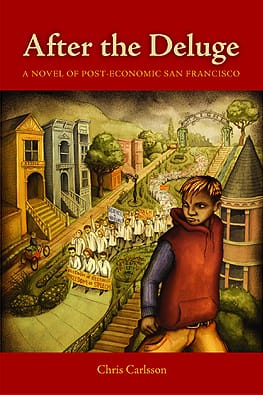
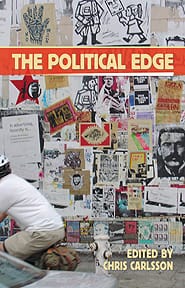
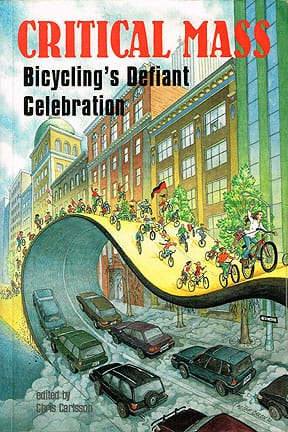
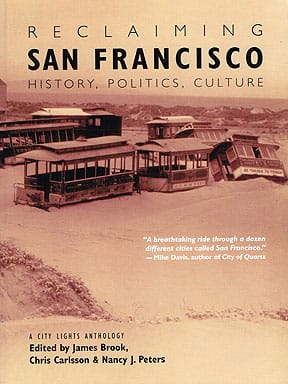
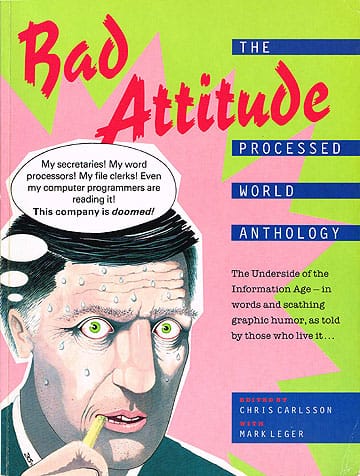
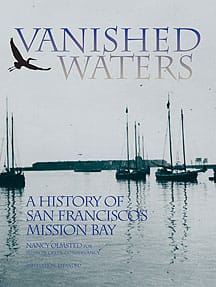
Hey! Nice report!
Few corrections, the one you have as Rumiñahui, actually is Antisana. “Ilinizas” actually is Rumiñahui.Sincholagua is ok and in Cotopaxi pic there is also Pasochoa volcano. Greetings